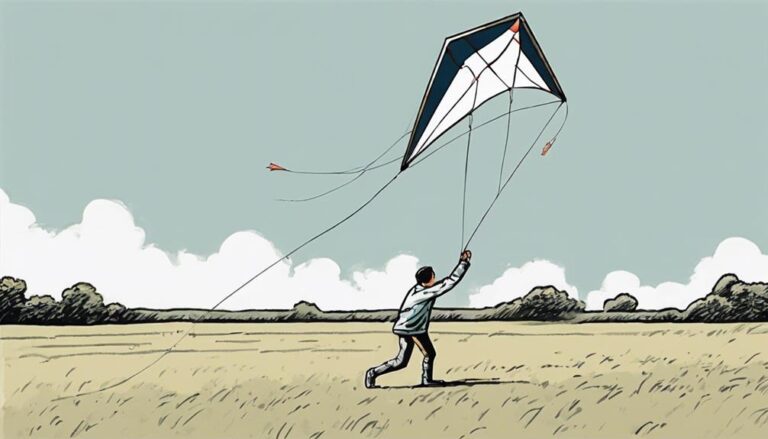Just as Icarus sought to conquer the skies with wings of wax and feathers, you’re faced with the challenge of mastering kite flying in conditions that barely whisper the presence of wind.
You’ll need to become adept at fine-tuning your kite’s bridle, understanding the capricious nature of gentle breezes, and perhaps adding a tail or two for stability. The nuances of selecting the right kite and making those critical technique adjustments are pivotal, yet they only scratch the surface.
Uncover the secrets to turning a seemingly insubstantial breeze into a day of soaring, and you might just find yourself closer to the sun than ever before, figuratively speaking.
Contents
Selecting the Right Kite
To excel in low wind conditions, you’ll want to choose a lightweight kite with a generous surface area, ensuring it catches even the gentlest of breezes. Opt for durable materials like ripstop nylon or polyester, which hold up well and respond better in light winds.
Look for designs like delta, diamond, or parafoil kites, known in the kite trade for their ability to fly well in minimal wind conditions.
Understanding Wind Conditions
Mastering low wind conditions starts with understanding how wind direction and speed can affect your kite’s performance. Utilizing a wind meter can reveal if conditions are right for flying.
Knowing wind direction ensures you position your kite effectively. Opting for larger kites with more surface area can capture even the slightest breezes.
Patience and skillful control are key to making the most of these conditions.
Technique Adjustments
Adjusting your kite’s bridle to a higher angle can significantly improve its ability to catch wind in low-wind conditions, offering a practical starting point for technique modifications.
Opting for a lightweight design and a longer, lighter line reduces drag, enhancing responsiveness.
Gentle maneuvers prevent stalling, crucial in mastering kite flying at minimal wind speeds.
Patience and fine-tuning your technique adjustments are key to learning to fly successfully.
Insider Low Wind Tips
Exploring insider tips can significantly enhance your kite flying experience, even when the wind seems too low for lift-off.
| Tip | Why It Works | Advanced Flying Techniques |
|---|---|---|
| Lightweight Kite | Catches more wind | Practice figure eights |
| Longer Lines | Reach stronger winds | Gentle pulls keep it aloft |
| High Aspect Ratio | Better performance | Look for thermals |
Maintenance for Optimal Performance
After uncovering insider tips for flying kites in low wind, it’s crucial to focus on maintaining your kite for optimal performance. Here’s how you can ensure it:
- Regularly check and replace worn-out or damaged bridle lines.
- Keep the kite sail clean for smooth airflow.
- Lubricate moving parts like swivels and connectors.
- Adjust the bridle settings forward to catch the slightest breeze.
These maintenance steps are key to enjoying low-wind kite flying.
Conclusion
So, you’ve learned the essentials of mastering kite flying in low wind. Choosing the right kite, understanding those subtle breezes, tweaking your technique, and keeping up with insider tips will make all the difference.
Remember, maintenance is key to optimal performance. Don’t get discouraged if it doesn’t click right away. With patience and practice, you’ll find yourself skillfully navigating even the slightest wind.
Keep at it, and soon you’ll be soaring, no matter how gentle the breeze.






